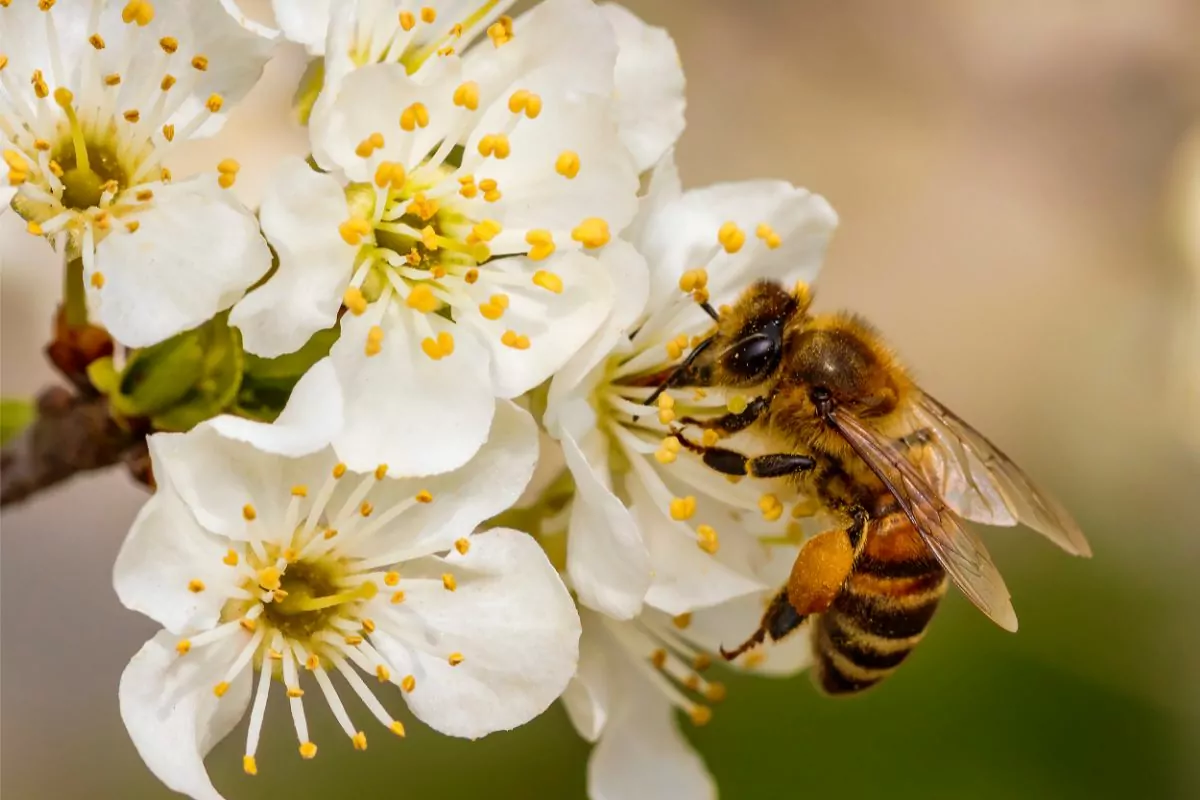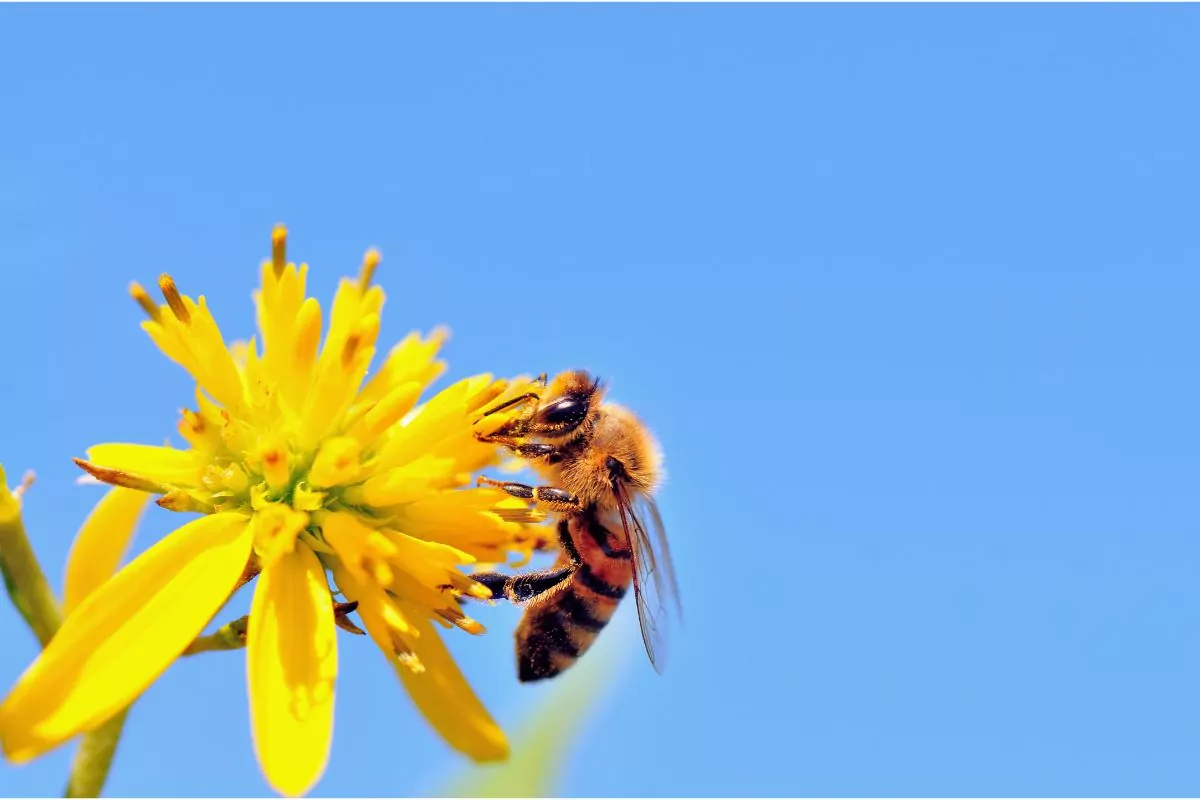When it comes to bees, and indeed other insects, you have likely heard that they seek nectar. However, nectar can often be misunderstood or you may not be entirely sure what it is.
In short, it’s a sweet liquid which is excreted from some plants and it’s an important source of carbohydrate energy that bees need to fuel themselves.

That, along with the protein from pollen is critical to the diet of a bee.
But of course, there’s a lot more you need to know than just this – so this handy guide that we’ve written will explain a lot more that you need to know about bees and nectar.
Ready to learn more? Then read on for all the answers.
Nectar – What Is It?
As we briefly mentioned, nectar is a sweet liquid which is secreted from some plants but more often than not, it is excreted from flowers.
This is why you will likely see a lot of bees, wasps and butterflies around specific types of flowers.
Nectar itself can range in sweetness levels, from the smallest being about eight percent and the highest at around fifty percent. To put this into some simple context, Coca-Cola is around ten percent.
While nectar is known for its sweetness, it is very important to the overall diet of a bee as it provides things like vitamins, oils, amino acids and carbohydrates.
Nectar is produced by the part of the flower or plant known as nectaries, which is a gland in the plant or flower. This can be located in various areas of the plant and this will be largely dependent on the species.
Why Bees Need Nectar?
Due to its complex range of sugars, bees need nectar to convert it into important dietary things like carbohydrates.
Pollen is a different matter though, because while pollen is critical for protein and fats, not all bees gather it.
In fact, male bees do not collect pollen at all because they have no pollen baskets (otherwise known as corbicula) allowing them to transport the pollen from flowers to their hives.
As a result, it is up to the female bee to collect pollen – commonly seen with cuckoo bumble bees.
Why Do Flowers Produce Nectar?
The reason that flowers produce nectar is because it’s a reward for pollination – which is a process of pollen transfer between flowers.
This is necessary to the continuation of these flowers because some need pollen to reproduce.
However, as we know, the majority of flowers are immobile, so they need extra help moving pollen from one flower to another – and this is conducted by an animal known as a pollinator.
Pollinators can be butterflies, bees, wasps and others.
As a reward for helping with pollination, the flowers produce nectar for the pollinators. This is a process that is somewhat inadvertent, but nonetheless the process works incredibly well for both parties.

When Do Flowers Produce Nectar?
Every species of flower will have its own time cycle, which is known as phenology.
The amount of nectar that can be produced from the flower will depend on its species – along with the quality of the nectar, age of the flower, the length of its season and more.
Many other factors come into play when we’re talking about the nectar levels and overall production by the flower or plant, including the climate, ambient temperatures and even the time of day.
Indeed, some researchers discovered that larger flowers produce more nectar generally and younger flowers tend to have a higher concentration of nectar than older flowers.
They also found that some flowers open only in the morning and close throughout the afternoon.
Finally, it was observed that the nectar levels increase when the temperatures increase, which seems to coincide with larger numbers of honeybees foraging for nectar.
Is Nectar Related To Migration?
In some ways yes. When flowers grow in the springtime, generally we see an increase in temperature and the conditions improve.
This is due to the flowers and plants that need UV rays from the sun to survive through photosynthesis.
It is at the same time that bees, butterflies etc. make their first appearance of the year, and they use the flowers to continue their own survival.
So yes, in many ways nectar is related to migration because bees will migrate for their own survival.
Are Bees Dangerous When Foraging For Nectar?
It depends on what you mean by dangerous. Generally, you should leave bees alone to get on with their survival and general life.
However, those that get in the way of some bees can find themselves getting stung – albeit it’s not especially common.
Much like us, it depends on a number of factors as to why a bee might attack, but the vast majority of the time, bees are placid and will avoid conflict as much as possible.
As a rule, it’s best to avoid getting in the way of bees during their foraging.
How Can I Help At Home?
If you are a keen gardener, you may decide to help the bees out! Simply head to your nearest garden store or center and ask them for flowers or plants which attract bees for pollination.
It’s important that you place these flowers in a safe place in your yard or garden though. Be sure to keep the flowers as far from your windows as possible and away from places frequented by children.
Remember, it’s not just bees that will use your flowers for pollination or their own uses. Other pests can introduce themselves into your garden, so be careful!
The Bottom Line
And that’s everything you need to know about nectar. It’s an important part of a bee’s diet and it plays an important role in pollination for the reproduction of flowers and other plants!
We hope you enjoyed this guide.
- Do Bug Zappers Kill Bees? Completely Explained - April 9, 2024
- Does Brake Cleaner Kill Bees? Full Explanation - March 20, 2024
- Do Bald-Faced Hornets Kill Honey Bees? & How to Protect Them - March 4, 2024
